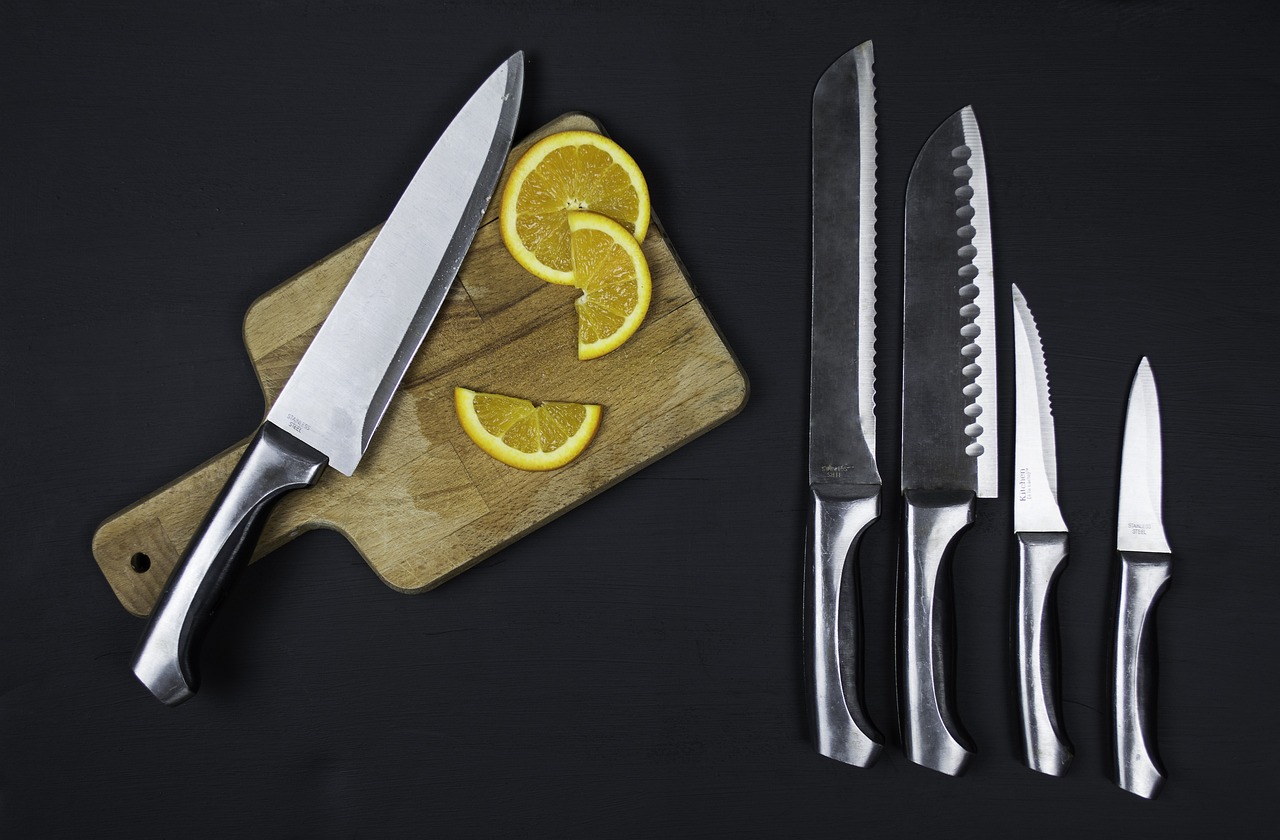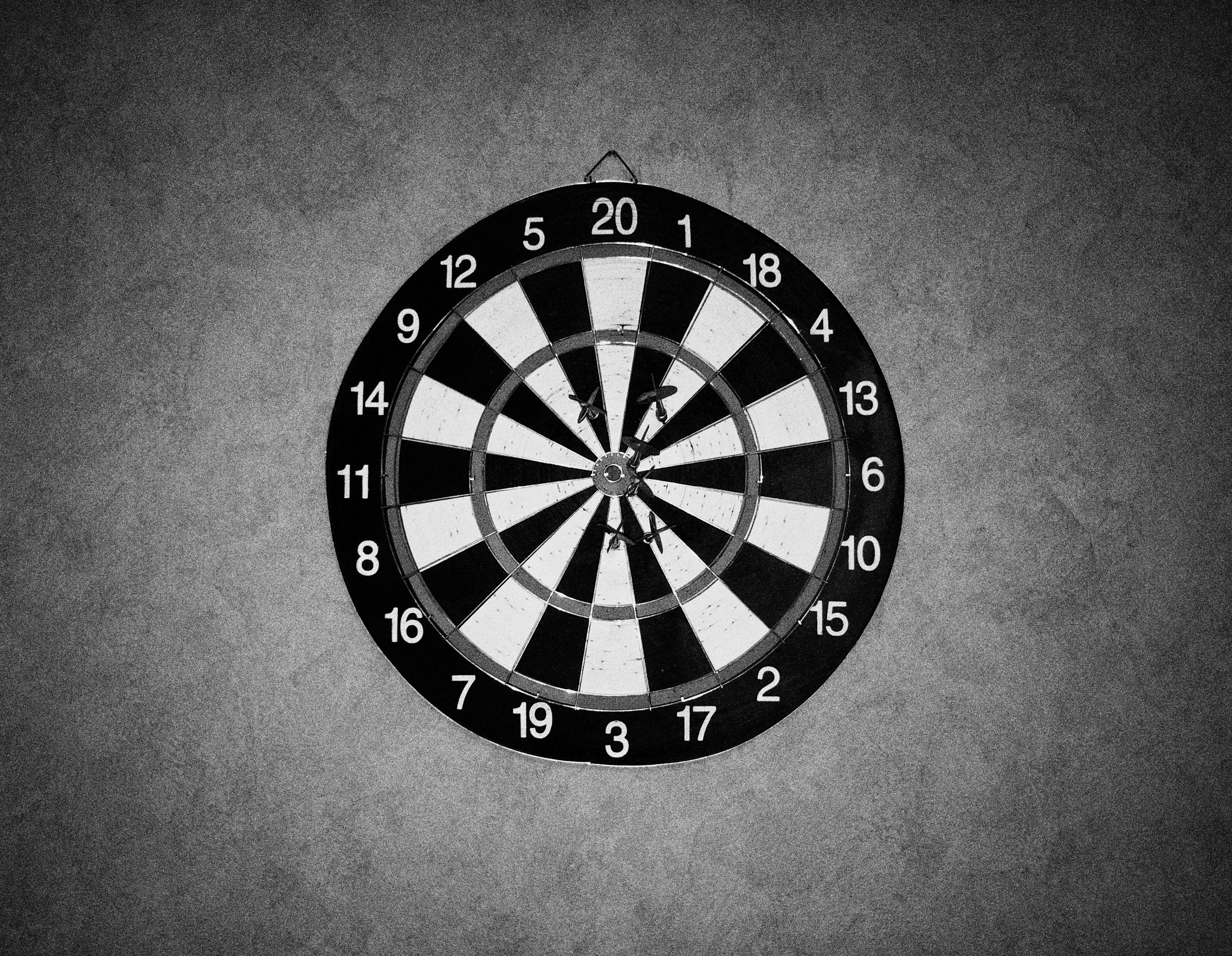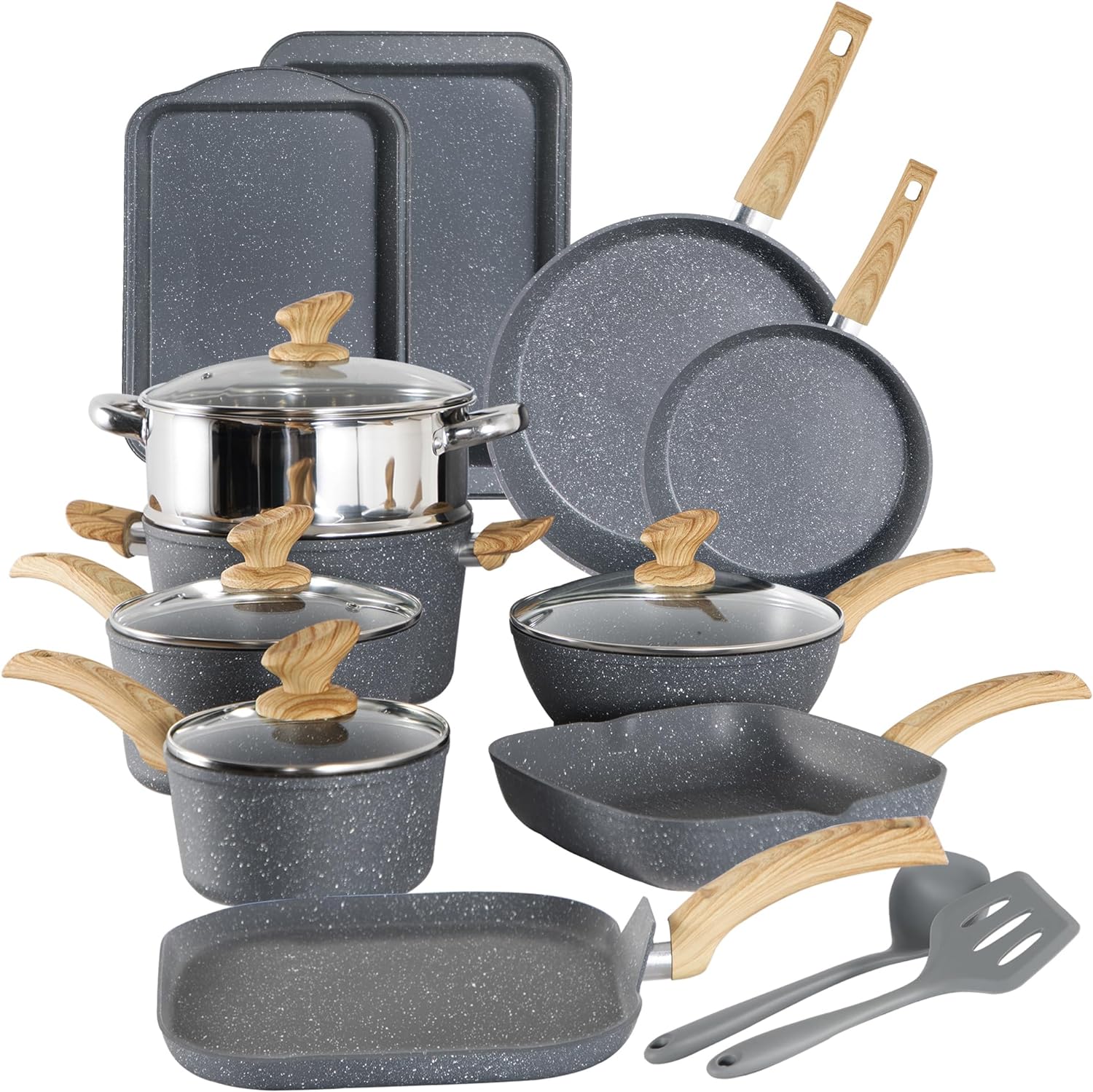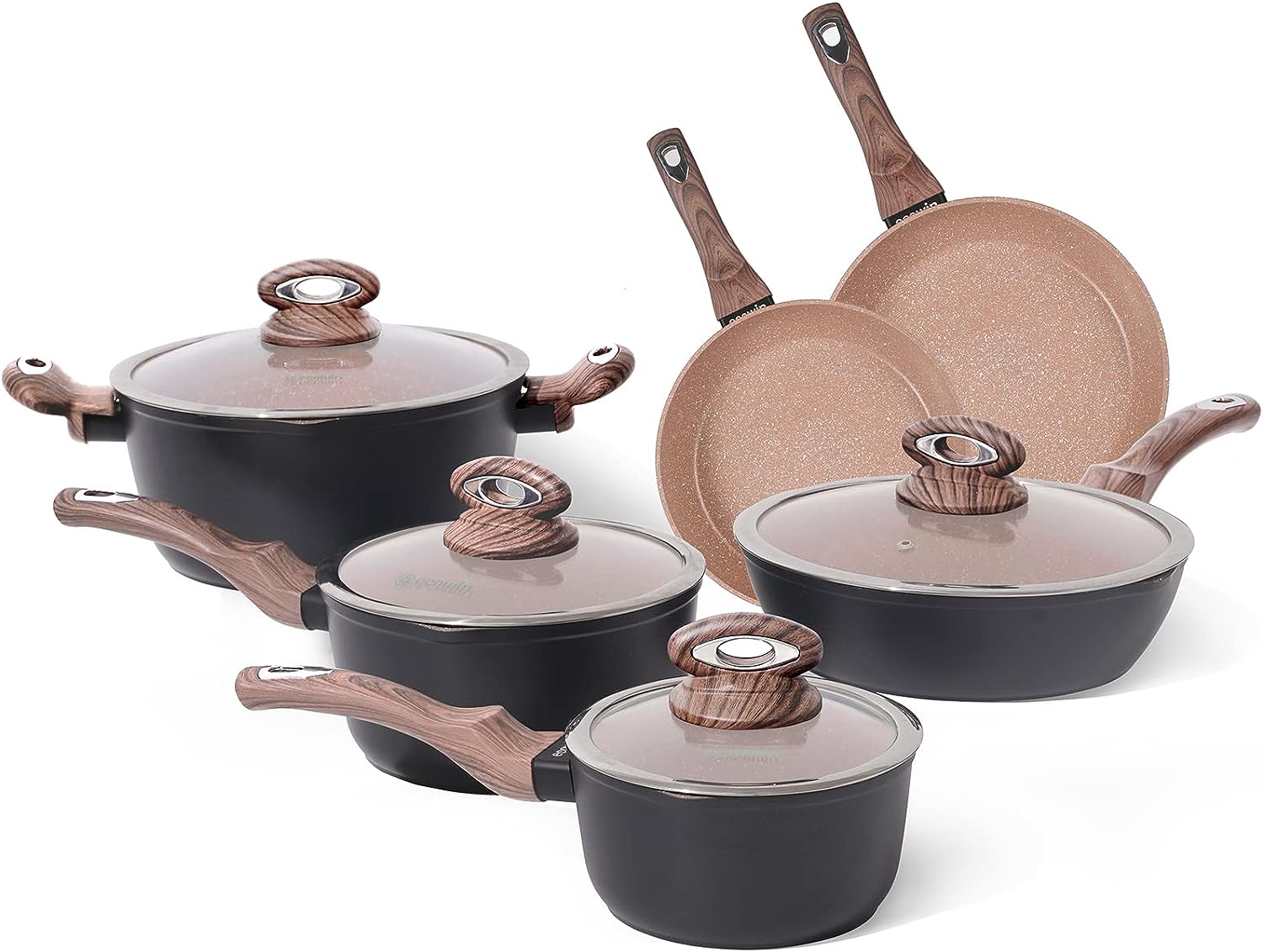If you’re looking to upgrade your kitchen tools, then look no further than the world of top rated kitchen knives. These essential kitchen companions are the perfect blend of precision, durability, and style. Whether you’re a professional chef or a home cook, having a set of high-quality knives is a game-changer in the kitchen. From slicing and dicing to chopping and mincing, these best kitchen knives will effortlessly elevate your culinary creations and make every meal preparation a breeze. Get ready to sharpen your skills and stock up on the finest blades that will truly enhance your cooking experience.
Top Rated Kitchen Knives
When it comes to preparing delicious meals in your kitchen, having the right tools at your disposal is essential. And one of the most important tools you need is a good set of kitchen knives. But with so many options on the market, how do you know which ones are the best? Don’t worry. We’ve got you covered. In this article, we will guide you through the top-rated kitchen knives that every home cook should consider adding to their collection.
1. Chef’s Knife
1.1 Features
The chef’s knife is a versatile and indispensable tool in any kitchen. With a broad and sharp blade, it can handle almost any cutting task with ease. Its curved edge allows for effortless rocking motion, making it ideal for chopping, dicing, and slicing. The length of the blade typically ranges from 6 to 12 inches, with most home cooks finding a blade length around 8 inches to be the most comfortable to work with.
1.2 Top Picks
When it comes to choosing a top-rated chef’s knife, there are a few names that consistently rise to the top. The Wusthof Classic 8-Inch Chef’s Knife is a favorite among professional chefs and home cooks alike. It boasts a razor-sharp blade, excellent balance, and a comfortable handle.
Another popular option is the Victorinox Fibrox Pro Chef’s Knife. Known for its affordability and high-quality construction, this knife is a great choice for those on a budget.
1.3 Price Range
Chef’s knives can vary greatly in price, depending on the brand and materials used. Entry-level options can start as low as $20, while high-end, professional-grade knives can exceed $200. It’s essential to consider your budget and cooking needs when selecting a chef’s knife.
1.4 Maintenance Tips
To keep your chef’s knife in top condition, it’s important to follow a few maintenance tips. Always hand wash your knife with mild soap and warm water, as dishwashers can damage the blade and handle. Regularly sharpen the blade using a honing rod or a knife sharpener to maintain its sharpness. Additionally, store your chef’s knife in a knife block or on a magnetic strip to prevent dulling and protect yourself from accidental cuts.
2. Santoku Knife
2.1 Features
If you’re looking for a knife that combines the features of a chef’s knife and a cleaver, the Santoku knife is the perfect choice. Originating from Japan, this knife typically has a shorter, wider blade and a straighter edge than a chef’s knife. The word “Santoku” translates to “three virtues,” representing its capability of slicing, dicing, and mincing with ease.
2.2 Top Picks
One of the top-rated Santoku knives on the market is the Shun Classic 7-Inch Santoku Knife. Its high-carbon stainless steel blade and ergonomic handle make it a pleasure to use. Another popular option is the Global 7-Inch Santoku Knife, known for its exceptional sharpness and durability.
2.3 Price Range
Like chef’s knives, the price range for Santoku knives can vary. You can find budget-friendly options starting around $30, while high-end Santoku knives can reach over $150. Consider your budget and preferences before making your selection.
2.4 Maintenance Tips
To keep your Santoku knife performing at its best, it’s important to take proper care of it. Hand wash the knife with warm, soapy water and dry it immediately to prevent rusting. Store it in a knife block or on a magnetic strip to protect the blade and ensure it stays sharp. Regularly honing and sharpening the blade will help maintain its cutting edge and extend its lifespan.
3. Paring Knife
3.1 Features
When it comes to peeling, trimming, and intricate cutting tasks, a paring knife is your go-to tool. This small, versatile knife usually has a blade length of 3 to 4 inches and a narrow, pointed tip. Its compact size and precise control make it perfect for tasks that require delicate handling.
3.2 Top Picks
One of the top-rated paring knives is the Wusthof Classic 3.5-Inch Paring Knife. With its high-carbon stainless steel blade and comfortable handle, it excels in precision tasks. The Victorinox Swiss Army 3.25-Inch Paring Knife is another popular choice known for its exceptional value and sharpness.
3.3 Price Range
Paring knives are generally more affordable compared to larger kitchen knives. You can find quality options starting as low as $10, while higher-end paring knives can range up to $50. Consider your specific needs and budget when selecting a paring knife.
3.4 Maintenance Tips
To keep your paring knife in excellent condition, hand wash it with mild soap and warm water after each use. Dry it immediately to avoid water spots and potential rust. Store it in a knife block or a sheath to protect the blade and prevent accidents. Regular honing will help maintain its edge, and occasional sharpening will restore its sharpness when needed.
4. Bread Knife
4.1 Features
A bread knife is an essential tool for precisely slicing bread and other delicate baked goods. It is characterized by its long, serrated blade, which allows you to cut through crusty bread without crushing it. The length of the blade typically ranges from 8 to 10 inches.
4.2 Top Picks
One of the top-rated bread knives is the Zwilling J.A. Henckels 8-Inch Bread Knife. Known for its razor-sharp serrated blade and comfortable handle, it effortlessly cuts through bread without tearing or crushing it. The Wusthof Classic Double Serrated Bread Knife is also highly regarded, with its double row of serrations ensuring clean and precise cuts.
4.3 Price Range
Bread knives generally fall into the mid-price range compared to other kitchen knives. You can find quality options starting around $30, while higher-end bread knives can reach over $100. Consider your budget and frequency of use when selecting a bread knife.
4.4 Maintenance Tips
To maintain the performance of your bread knife, hand wash it with warm water and mild soap after each use. Dry it immediately to prevent moisture from causing damage or rust. Store it in a knife block or a designated slot to protect the blade from dulling and keep it easily accessible. Regularly honing the blade will help maintain its sharpness, and occasional sharpening may be necessary to restore the serrations.
5. Utility Knife
5.1 Features
As its name suggests, a utility knife is a versatile tool that can handle a wide range of cutting tasks in the kitchen. It generally has a blade length between 4 to 7 inches, making it perfect for tasks that fall between a paring knife and a chef’s knife in terms of size and precision. It can be used for slicing, dicing, and trimming small to medium-sized ingredients.
5.2 Top Picks
One top-rated utility knife is the Mercer Culinary Millennia 6-Inch Utility Knife. Known for its sharp blade and comfortable handle, it offers excellent value for the price. The Victorinox Swiss Army 4.5-Inch Utility Knife is another popular option that combines functionality, durability, and affordability.
5.3 Price Range
Utility knives generally fall into the mid-price range, although budget-friendly options can be found for as low as $15. Higher-end utility knives can reach over $60. Consider your budget and specific needs when selecting a utility knife.
5.4 Maintenance Tips
To ensure your utility knife remains sharp and in good condition, hand wash it with warm water and mild soap after each use. Dry it immediately to prevent moisture-related issues. Store it in a knife block or a designated slot to protect the blade and prevent accidents. Regular honing and occasional sharpening will help maintain its cutting edge.
6. Boning Knife
6.1 Features
A boning knife is designed for precision tasks that involve separating meat from bone, trimming fat, and deboning poultry or fish. It typically has a narrow and flexible blade with a pointed tip, allowing for intricate and controlled movements. The blade length can vary, but it often ranges from 5 to 7 inches.
6.2 Top Picks
One highly regarded boning knife is the Victorinox Swiss Army 6-Inch Boning Knife. Known for its sharpness, flexibility, and affordable price, it is a popular choice among home cooks and professional chefs. The Dalstrong Gladiator Series 6-Inch Boning Knife is another top pick, offering excellent precision and durability.
6.3 Price Range
Boning knives can vary considerably in price, depending on the brand and materials used. While budget-friendly options can start around $20, high-end boning knives can reach over $100. Consider your budget and the level of precision required for your cooking needs.
6.4 Maintenance Tips
To keep your boning knife in optimal condition, hand wash it with mild soap and warm water after each use. Dry it immediately to prevent water spots and potential rust. Store it in a knife block or a protective sheath to avoid accidents and maintain the blade’s sharpness. Regular honing will help maintain its cutting edge, while occasional sharpening may be necessary to restore its sharpness.
7. Cleaver
7.1 Features
The cleaver is a versatile and robust knife that excels in heavy-duty tasks, such as chopping through bones and tougher cuts of meat. It usually has a thick and heavy blade with a broad surface area, allowing for powerful cuts and tenderizing. The blade length typically ranges from 6 to 8 inches.
7.2 Top Picks
One highly recommended cleaver is the Wusthof Classic 7-Inch Hollow Edge Nakiri Knife. It offers exceptional balance, precise control, and versatility in the kitchen. The J.A. Henckels International Classic 6-Inch Meat Cleaver is another popular choice known for its durability and affordability.
7.3 Price Range
Cleavers can vary in price depending on the brand, materials, and intended use. You can find entry-level options starting around $30, while high-end cleavers can reach over $150. Consider your budget and specific cooking needs before making a purchase.
7.4 Maintenance Tips
To keep your cleaver performing at its best, hand wash it with warm water and mild soap after each use. Dry it immediately to prevent moisture-related issues. Store it in a knife block or a designated slot to protect the blade and keep it secure. Regular honing and occasional sharpening, if needed, will help maintain its cutting performance and longevity.
8. Carving Knife
8.1 Features
A carving knife is specifically designed for slicing cooked meats, such as roasts, poultry, and hams. It typically has a long, narrow blade with a pointed tip for precise and effortless slicing. The blade length commonly ranges from 8 to 12 inches.
8.2 Top Picks
When it comes to carving knives, the Victorinox Swiss Army 12-Inch Fibrox Pro Slicing Knife is a popular choice. With its long, sharp blade and comfortable handle, it excels in creating thin, even slices. The Wusthof Classic 10-Inch Hollow Edge Carving Knife is another top-rated option known for its precision and balance.
8.3 Price Range
Carving knives, especially those with longer blades, can be more expensive compared to other kitchen knives. Entry-level options can start around $30, while higher-end carving knives can range upwards of $200. Consider your budget and the frequency of use when selecting a carving knife.
8.4 Maintenance Tips
To keep your carving knife in optimal condition, hand wash it with mild soap and warm water after each use. Dry it immediately to prevent water spots and potential rust. Store it in a knife block or a protective sheath to maintain its sharpness and prevent accidents. Regular honing and occasional sharpening will help keep the blade slicing effortlessly.
10. Steak Knife
10.1 Features
Steak knives are specialized knives designed for slicing through cooked meats, particularly steaks. They typically have a sharp, serrated blade that effortlessly cuts through the meat without tearing or crushing it. Steak knives often come in sets, and their blades are generally around 4 to 5 inches long.
10.2 Top Picks
One highly recommended set of steak knives is the J.A. Henckels International Stainless Steel 8-Piece Steak Knife Set. Known for their sharpness, durability, and comfortable handles, they make a great addition to any dining table. The Wusthof Gourmet 4-Piece Steak Knife Set is another popular option, offering excellent value for the price.
10.3 Price Range
The price range for steak knives can vary depending on the quality and brand. Entry-level sets can start around $20, while higher-end sets can exceed $100. Consider your budget and the number of steak knives you require when making a purchase.
10.4 Maintenance Tips
To keep your steak knives in excellent condition, hand wash them with mild soap and warm water after each use. Dry them immediately to prevent water spots and potential rust. Store them in a designated slot or protective sheaths to keep the blades sharp and protect them from damage. Regular honing will help maintain their cutting performance, and occasional sharpening may be needed to restore their sharpness.
In conclusion, having a set of top-rated kitchen knives is essential for any home cook. The chef’s knife, Santoku knife, paring knife, bread knife, utility knife, boning knife, cleaver, carving knife, and steak knife each offer unique features and benefits for various tasks. By considering your cooking needs, budget, and maintenance requirements, you can select the perfect set of kitchen knives that will help you create culinary masterpieces with ease. So go ahead, invest in quality knives and elevate your cooking experience to a whole new level!


















